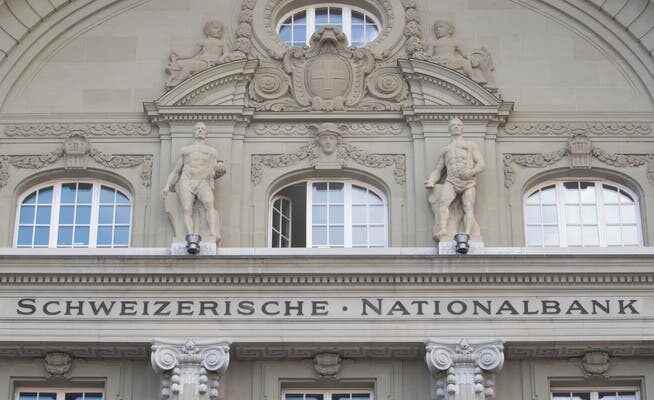The Swiss National Bank (SNB) expects persistent inflationary pressure and is therefore raising its key interest rate for the third time; this time by 50 basis points. For 2023, they now expect annual average inflation of 2.4 percent.
The Swiss monetary authorities are primarily relying on higher interest rates to stabilize prices.
This time, the Swiss National Bank (SNB) didn’t surprise most augurs so much. In the fourth and last monetary policy assessment of the year, it came to the conclusion that a further tightening of its monetary policy is indicated. Like the American Fed on Wednesday, the SNB is now raising its key interest rate by 50 basis points and explicitly states that further interest rate hikes cannot be ruled out. The turnaround in interest rates is therefore clear. At the beginning of June, the key interest rate was -0.75 percent, now it will be 1 percent from December 16th.
Follow the SNB press conference live from 10 a.m. here.
Persistent inflationary pressure
With the third interest rate hike this year, the Swiss monetary watchdogs are sending a clear signal that they are serious about price stability being a priority. Contrary to the forecast in September, the increase in consumer prices in the fourth quarter weakened slightly from 3.0. A further slowdown in economic activity is also to be expected. For the current year, the SNB expects gross domestic product to grow by 2.0 percent, but forecasts that this will fall to just 0.5 percent in 2023.
However, the SNB assumes that inflation will remain high for the time being. In January, a significant increase in the administered prices (e.g. for electricity), which are particularly important in Switzerland, will drive up inflation again. The National Bank cannot prevent this. But she wants to ensure that second-round effects (via general price and wage increases) do not give inflation sustained momentum. Inflation dynamics have already widened considerably and are no longer limited to energy and imported goods.
Despite the higher interest rate, the SNB’s new conditional inflation forecast assumes slightly higher inflation next year due to the stronger than expected inflationary pressure from abroad. It should now only fall to 2 percent at the end of 2023. For the current year, the monetary watchdogs expect annual average inflation of 2.9 percent and for 2023 2.4 percent.
Limits and SNB Bills
The National Bank also emphasizes that it is ready to be active in the foreign exchange market if necessary. While in the past this has implied buying FX to prevent the franc from becoming too strong, it may now be more about selling FX again to encourage the franc to strengthen and thus ease imported inflation. Since the last hike in September, the franc has weakened in real terms. In the long-term trend, it is no longer highly valued. Rate hikes and foreign exchange sales are to some extent a substitute. The less the SNB raises interest rates, the sooner it has to strengthen the franc by selling foreign exchange.
In order to implement its monetary policy, the SNB must siphon off the very high level of liquidity and ensure that the banks borrow funds at all and not just park them in SNB current accounts. Otherwise the decisive Saron interest rate would hardly be able to be formed reliably.
The monetary authorities do this by conducting (reverse) repo transactions with the financial institutions, where the banks provide liquidity to the SNB, and by issuing tradable SNB Bills. It only seems to be selling some foreign exchange as a supplement so far. Since the last interest rate decision, sight deposits at the SNB have fallen by CHF 212 billion; the vast majority of this went into SNB bills and repo transactions.
To ensure that banks trade with each other, the SNB sets a limit for each financial institution up to which sight deposits can be paid interest at the base rate of 1.0 percent. Amounts in excess of this are now subject to interest of 0.5 percent, which creates an incentive to lend these to other institutes or use them for other purposes. The limit is calculated as a multiple of the minimum reserve requirement.
From 10 a.m., the members of the Board of Directors explain their decision and answer questions.
More to come.
